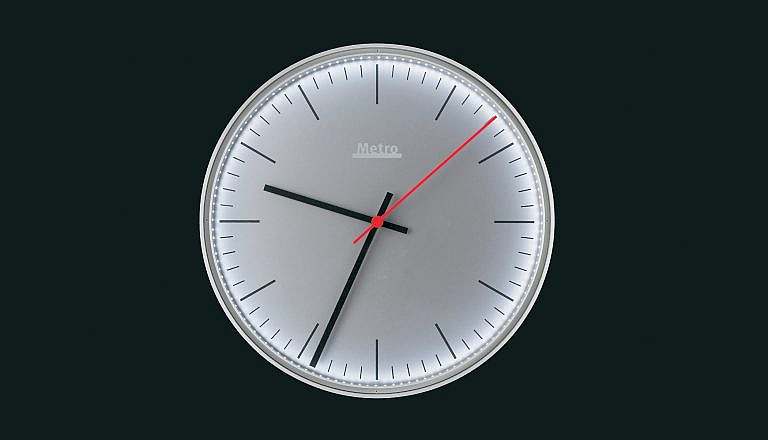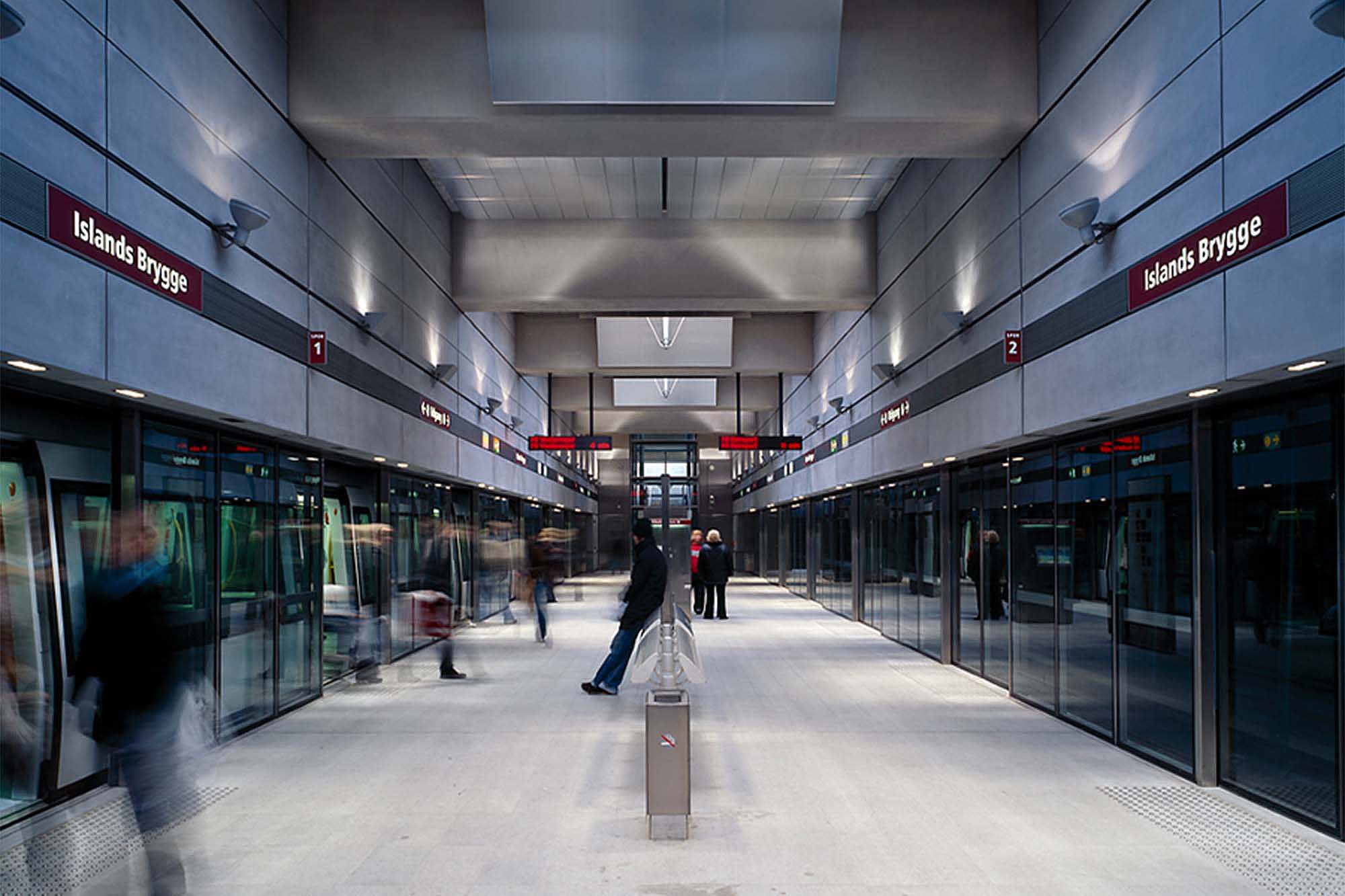The Copenhagen Metro is an underground railway where the architecture deliberately uses natural and artificial light to create a comfortable and safe environment for travellers. Both in the design and planning of the metro, KHR's ambition was that daylight should play as large a role as possible, thereby counteracting the feeling of being cut off from the outside world in the metro's up to 20 m deep station spaces. Openness and a view of the sky through skylights are essential parameters for each passenger to feel safe and to be able to survey the situation and the space. In addition, the functional and minimalist design of the metro stations contributes to easy orientation and quick familiarity with the Copenhagen metro stations.
Copenhagen
Denmark
Ørestadsselskabet I/S
5 MIA
Nominated for Mies van der Rohe award, 2005
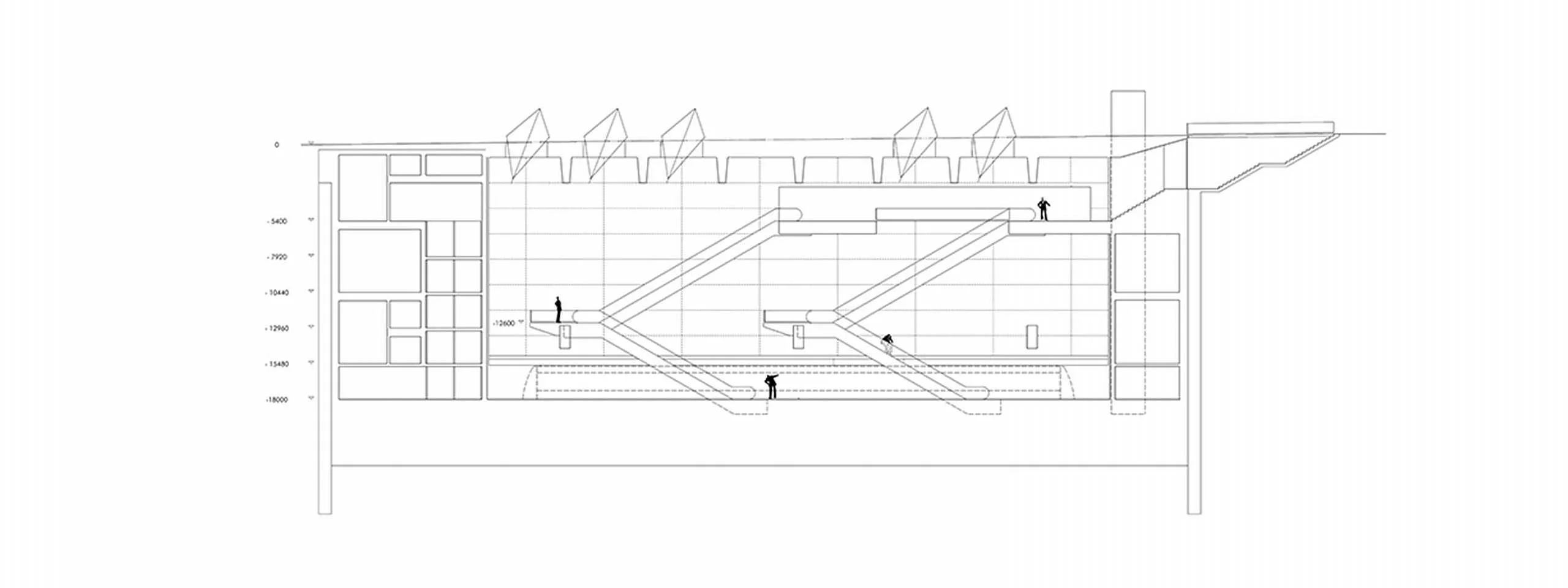
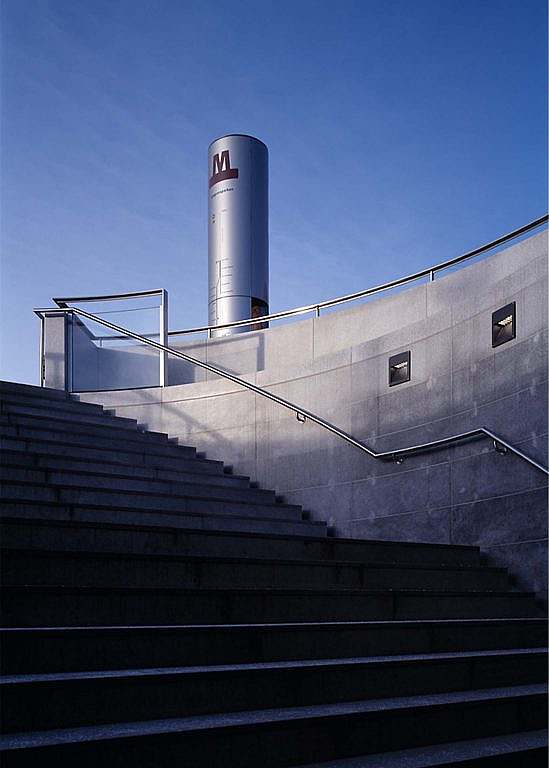
Carefully placed skylights and prisms create a spatial connection between the two worlds above and below ground. The distinctive skylights also help to create the metro plazas above ground and act as signposts for travellers in Copenhagen's metro system.
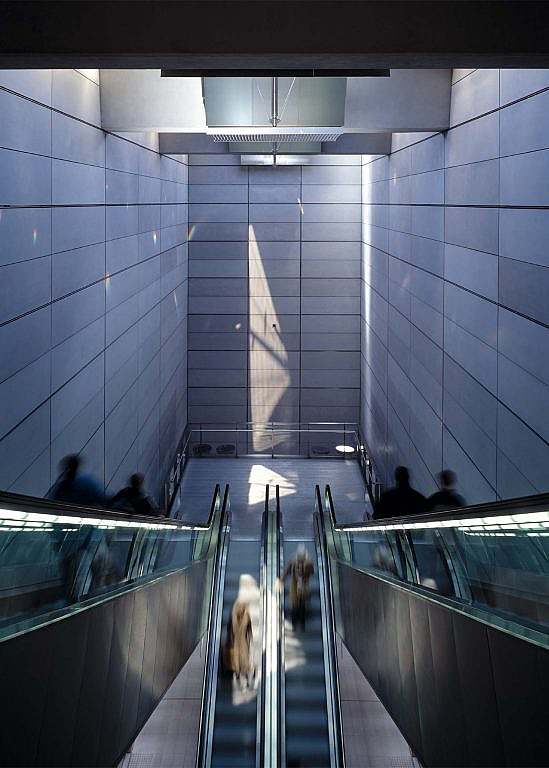
Strong interdisciplinary cooperation in the Metro project
The reference from the train can be read in the station. Through a strong collaboration between engineers, architects and designers, qualities have been created for the project across disciplines. The building approaches the world of the train a little bit and vice versa. KHR has participated in the design work around the train and has also designed objects like the metro clock and the bale handler, which in this way fit optimally into the visual profile of the metro.

Architecture, infrastructure planning and design for Copenhagen Metro
The journey with Copenhagen Metro began at KHR architects in 1994, when we were commissioned to be the client's architects on the project. KHR architects have been responsible for the architecture and planning of the entire first phase of Copenhagen Metro. The work includes both the architecture of the stations and the new urban spaces above ground, consulting and planning of the infrastructure itself as well as industrial design for the new stations - among others metrouret and ballehvileren.
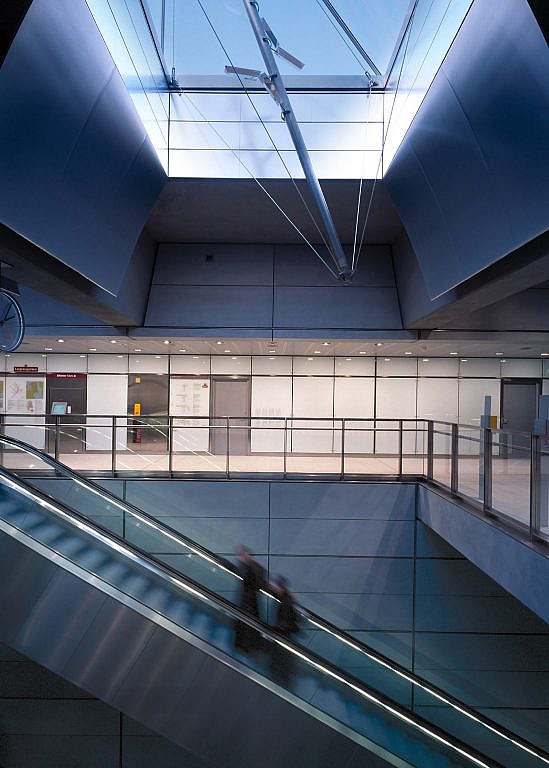
Copenhagen's underground: light underground creates well-being and security
The strong focus on daylight is unique to Copenhagen Metro.
KHR allied itself with one of the leading experts in the field of artificial light versus daylight; the Austrian lighting engineering firm Bartenbach Lichtlabor GmbH. Over three years, they jointly developed a solution where daylight and artificial light are perceived as a whole and complement each other.
During the design phase, great emphasis was placed on ensuring that passengers can get around quickly and safely, and good lighting conditions are an important safety factor in this respect. So are the short stops on the platforms, which are cleared of people every 2 or 4 minutes as the metro glides past. The station's straight lines, smooth surfaces and light greys have no obvious corners and hidden nooks for potential criminals and harmless street musicians to keep above ground.
